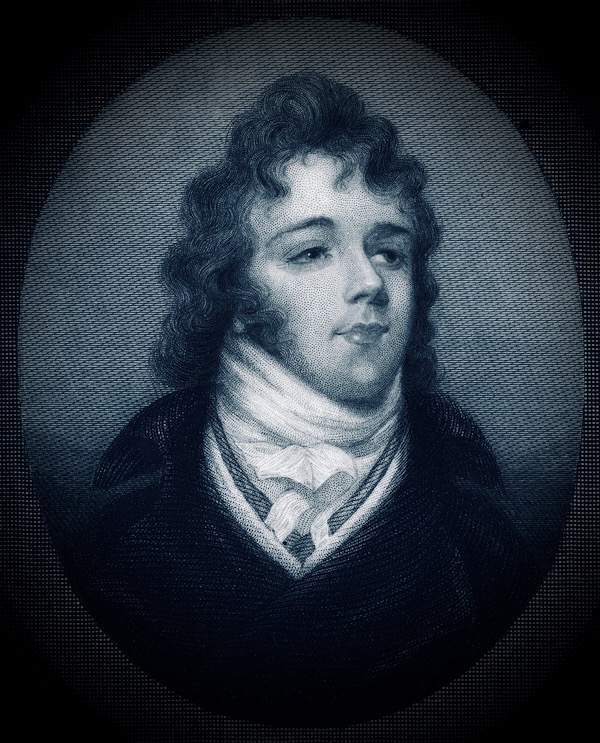
I was prepared to thoroughly dislike Ian Kelly’s biography of Beau Brummell. The attendant ballyhoo when it was released was lascivious and sensational — Brummell as “a Casanova and a playboy;” variously the “Boy Toy” and “Toy Boy” of the Duchess of Devonshire; taking lovers of both sexes; his grandfather a brothel keeper, and his mother a courtesan. It has also affected a vulgar contemporaneity. He was the “first celebrity;” “the first metrosexual,” and “the inventor of the suit” — odd, since he never wore one. In the unkindest cut, the subtitle, in crossing the Atlantic from Britain to America, was switched from “The Ultimate Dandy” (something of an oxymoron, as Brummell originated dandyism) to “The Ultimate Man of Style.”
My worst fears have been disappointed. Mr. Kelly’s account of Brummell’s life is well written, lively, informative, factual, balanced and innovative. It is, simply put, the best biography of Brummell.
The granddaddy of Beau-ography is Capt. Jesse’s “A Life of George Bryan Brummell, Esq.,” published four years after Brummell’s rather ignored death. Jesse had the unique advantage of meeting Brummell during his exile in France. He saw Brummell’s bathing and dressing ritual, and all subsequent biographers have used his eyewitness accounts. He also saw many of Brummell’s early letters, long since destroyed. He interviewed many of Brummell’s acquaintances. But Jesse has many flaws as well. His account is skewered to the Beau’s exile and decline, when most of his sources knew the Brummell. It is long winded. Perhaps most importantly, Jesse is no professional biographer: he uncritically accepts almost every story told to him. Another weakness is that his book came out before the publication of the many Regency memoirs and diaries that mention Brummell (with the exception of Harriette Wilson’s, the leading courtesan in London and a boon companion of Brummell).
Jesse and these memoirs — particularly the recollections of Wilson, Thomas Raikes, poet Tom Moore, Lady Hester Stanhope, and Capt. RH Gronow — are the fount for the bulk of the inimitable anecdotes that constitute Brummells life. The same stories get recycled, with slight variations and an occasional novelty, in the subsequent biographies. They start with Roger Boutet de Monvel’s “Beau Brummell and his Times,” dating from the first decade of the twentieth century. Lewis Melville’s “Beau Brummell; His Life and Letters,” published in the 1920s, significantly appended many of the Beau’s letters from the later days. Willard Connelly’s “The Reign of Beau Brummell” is yeoman-like. Kathleen Campbell’s “Beau Brummell” is one of my favorites because it sympathetically captures his spirit. Both were published in the 1940s. In the 1950s came Carl Maria Franzero’s “Beau Brummell,” which rehashes the same stories to such an extent that he appears to have lifted whole paragraphs from D’Aurevilly’s “Du Dandysme.” Samuel Tennenbaum’s late 1960s book “The Incredible Beau Brummell” adds nothing new, except replenishing the Victorian censoriousness that Campbell had helped to dispel. From the 1970s, Keith B. Poole’s monograph on Brummell in “The Two Beaux” is fact-logged and uninspired. Hubert Cole’s “Beau Brummell” was a breakthrough. He went back to original sources and uncovered many facts, locating, for example the will of William Brummell, Brummell’s father, and a hitherto undiscovered drawing of the Beau in his prime. His biography had been the most factually accurate, though somewhat dry. In addition to the full-length biographies, Brummell has earned a chapter in numerous collections, such as Clare Jerrold’s “The Beaux and the Dandies” (1909) and the Whartons’ reproving “Wits and Beaux of Society,” dating from the mid-19th century. These shorter pieces tend to be unoriginal.
Although not a biography, and not book length, Ellen Moers’ consideration of Brummell is as important as anything else. She devotes a chapter to him and another to the Regency dandies in “The Dandy.” She does a masterly job of fixing Brummell and the Regency dandies in the context of their time. Her analysis informs all subsequent writing about the Brummell. She also legitimizes the use of Regency fiction in assessing the Brummell, greatly enriching our understanding. More about the Beau is scattered throughout the rest of her tome, including the endnotes, so the entire book is an important contribution to Brummell scholarship.
Other staples include Hazlitt’s contemporary, though written from afar, appraisal, “Brummelliana;” an anonymous article from Blackwood’s Edinburgh Magazine, D’Aurevilly’s notoriously fanciful “Du Dandysme et de Georges Brummell,” the Incomparable Max’s exposition on Brummell and the nature of dandyism “Dandies and Dandies,” and Virginia Woolf’s appreciation in “The Second Common Reader,” which, because of its author, gave Brummell a certain gravitas.
It is upon this foundation that Mr. Kelly builds or, more accurately, improves. He dutifully includes most of the chestnuts without which a biography of Brummell could not exist: “Who’s your fat friend?” “You call that a coat?” Brummell’s (mistaken) use of a blue-nosed soldier to locate his own troops, among many others. His retelling of these stories tends to be spare. This is both good and bad. Bad because an individual tale about Brummell, like all good tales, gets better (if not more accurate) with more elaboration. Good because there are so many tales that their accumulation would become monotonous. Mr. Kelly imaginatively organizes them (except for those that must have occurred at a specific point in the Brummell’s life) by when they would have occurred during the Beau’s day.
Context is where the book shines. By imaginatively exploiting extensive scholarship from the fields of fashion, history, sociology, art and medicine that prior biographers did not, Mr. Kelly gives us new insights. His description of the clothes Brummell wore is clear and detailed, simply because he took the time to personally investigate surviving examples of Regency men’s clothes. He traces the origin of Brummell’s revolutionary style to one of the Beau’s Eton “school uniforms,” and also to Brummell’s military uniform, neoclassical art, and simple sex appeal.
Mr. Kelly, like Cole, went back to the original documents (such as the betting books at Brummell’s clubs as well as his Eton and Oxford records). In addition to gleaning some new stories, he is more precise in the mundane matters, such as dates, that are the bedrock of any definitive biography. He even gives us a reasonable estimate of Brummell’s height — something no one else has ever done — by extrapolating from the Beau’s entries in the weighing books at Berry Bros. And it is reassuring to discover that the Brummell’s universally admired physique started to balloon at the tender age of 30!
Kelly’s assiduousness has produced at least one major revelation: He uncovered medical records at the asylum where Brummell spent his last year. They show that Brummell suffered and died from syphilis. No prior biography ever hinted at this. Brummell’s disease explains many things: his loss of hair in his late thirties, previously attributed to his use of a heating wand to curl his hair; his large chemist bill, previously attributed to his fondness for cold cream (!); and his drooling, exacerbated by his medicine rather than purely brought about by a stroke. Indeed, Mr. Kelly attributes Brummell’s lasting contribution to hygiene, his famously elaborate bathing regimen, where he thoroughly scrubbed his entire body, as a necessity to erase his syphilitic cankers and rashes, not simply as a cosmetic.
The book also contains two contemporary drawings of the bust of Brummell not seen in prior books. These drawings look nothing like the two other busts of the Beau: his features are much coarser, but consistent with the broken nose that Brummell was known to have suffered. It would have been helpful if Mr. Kelly had elaborated on the origins of all four and evaluated them. Without explanation, the book omits the only full-length contemporary drawing (by Dighton) of Brummell. Mr. Kelly mentions that Brummell as an adult never sat for a full-length portrait. One is left wondering if he is implying that this drawing is not an accurate portrayal, or is of someone else or merely not taken from life.
The prurience suggested by much of the media coverage is in fact quite minimal. There is only one sentence in the book about the Brummell’s grandfather being a pimp. Because his lodging house was located on a disreputable street, it “may have been a bawdy house.” There is no authority cited to support this supposition. In the absence of anything further, I therefore side with the usual version, that he was a servant and/or a confectioner, as well as a renter of lodgings. In the book, the Brummell’s mother is described not as a whore but as only “unconventional” because she lived openly with his father before their marriage. Fair enough.
On the issue of Brummell’s sexuality, Mr. Kelly acquits himself well. His brief is not that Brummell was a Casanova, but that he had normal sexual appetites and engaged in normal sexual activity. The prevailing opinion, first advanced by Jesse and championed by Moers, has been that the Beau was chaste if not celibate. Kelly disagrees, based on the discovery that Brummell had syphilis, his known friendship with two of the leading London courtesans, and the commingling with prostitutes that was typical of the Beau’s set. Mr. Kelly concludes that, far from being her boy toy, Brummell probably did not have an affair with the much older Duchess of Devonshire; he may or may not have had one with the Duchess of York, the woman to whom he was most attached; and he definitely was not exclusively homosexual, although, in the Beau’s pre-Freudian times and social milieu, normally there was a certain homoerotic (Kelly dubs it “homosocial”) tinge to male companionship and masculine activities. He reasonably speculates that the Beau contracted his disease from one of the prostitutes with whom he consorted socially.
As for those gaffes trying to make Brummell contemporary, Mr. Kelly gets them over with in the introductory chapter. This introduction contains a gracefully written assessment of the Beau’s impact on fashion, society and philosophy. He draws interesting parallels between Brummell and Oscar Wilde, two dandies who are often contrasted. When he goes beyond Brummell and considers dandyism in general, however, Mr. Kelly blithely repeats current commonplaces, such as the Garelick/Walden trope of the dandy as modern media celebrity. He is also indulgent concerning the pseudo-intellectualization of Brummell by my personal bugaboo, those demmed Frenchies, Barbey and Baudelaire. Mr. Kelly ends the lineage of the dandy (except for tossing out names of modern celebrities as possible dandies, as with Garelick and Walden) with the Incomparable Max, thus mimicking Moers’ pioneering work. Indeed, his thoughts on dandyism seem more like those of a schoolboy who parrots his homework, rather than someone who has critically appraised what he has studied.
After that first, somewhat rocky beginning, the book is pure gilt. All in all, if you have but one book to read about Brummell, it should be this one: After almost two centuries, Brummell has finally been rewarded with the biography he has always merited. — NICK WILLARD
